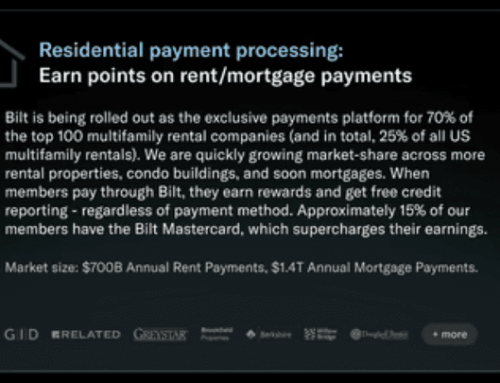Al Drago/Bloomberg
Banks could soon be able to position assets as collateral to both the Federal Reserve’s discount window and the Federal Home Loan Bank System.
Fed Vice Chair Philip Jefferson, speaking Monday morning at the Federal Reserve Bank of Atlanta’s annual Financial Markets Conference, said closer collaboration between the two emergency lending programs was one of several developments likely to emerge from the central bank’s ongoing effort to modernize its discount window.
“The Federal Home Loan banks and the Fed … have been looking at issues of interoperability with regard to the pledging of collateral,” Jefferson said. “That work is in its early stages and I look forward to advancements in that area.”
The comments came during an onstage keynote conversation with Atlanta Fed President Raphael Bostic. During the discussion, Jefferson said the Fed is studying a wide range of changes, including potentially allowing intraday credits — also known as daylight overdrafts — to be automatically converted into discount window loans.
Banks use intraday credit to process large transfers that exceed their reserves held at the Fed. Typically, banks settle these overdrafts before the close of business, sometimes by borrowing from their local Federal Home Loan bank or from other banks, so they can close the operating day with a positive balance. Currently, if they wish to obtain overnight credit from the Fed to settle their books, they must go through the discount window application process.
Jefferson declined to say whether a change to this arrangement is in the offing, but noted that it is being examined closely.
“I don’t want to make any pronouncements about what Fed policy is going to be going forward for this very important issue — and so I appreciate the question — but I will say that such issues and questions are under study,” he said.
Jefferson noted that the Fed has already made a handful of key changes to the discount window with an eye toward making it easier for banks to use. This includes the creation of an online portal for taking out discount window loans and allowing electronic signatures for borrowing documents.
Last September, the Federal Reserve Board issued a request for information on how banks think about and use the discount window, as well as areas in need of improvement.
While discount window policies are determined by the Fed board of governors in Washington, the actual operations of the facilities are handled by the 12 regional reserve banks throughout the country. During Monday’s conversation, Bostic said the Atlanta Fed has also taken steps to improve the effectiveness of emergency lending, including by fostering a better relationship with the Federal Home Loan Bank of Atlanta.
“We’ve actually tried to strengthen our relationship with our Federal Home Loan bank in our area, so we actually know each other and can gain comfort in actually picking up the phone and calling when there are issues, because we don’t operate exactly the same but we have a lot of overlap,” he said.
Bostic said these efforts have been “very fruitful” and he expects the improved dialogue would prove useful in a crisis.
Similarly, he said the reserve bank has taken steps to ensure more banks in its district have taken the steps necessary to borrow from the discount window in a pinch. After the failure of Silicon Valley Bank in March 2023 — an episode in which the Santa Clara, California, bank struggled to borrow from the Fed amid a run on deposits — Bostic said he made readiness a priority.
“After SVB, I called my team and I said call every bank in the district that should have a relation and find out if they’re ready. And we found that not everybody was ready,” Bostic said. “So we got on them, and the coverage of people who are ready to use it if necessary is way up.”
Jefferson said a similar dynamic has played out throughout the Federal Reserve System, resulting in a “significant” uptick in banks that have pledged collateral and tested their borrowing capabilities.
Along with the discount window, Jefferson said the Fed is reviewing its other liquidity facilities, including the Standing Repo Facility, which was established in July 2021 to support the function of money markets.
“I am hopeful that over time we will be able to make more institutions comfortable with it,” he said. “It’s an important backstop for us right now and something that we’re thinking about — different design features with respect to the Standing Repo Facility that can be looked at going forward.”
Jefferson declined to weigh in on how the Fed might respond to the growing presence of nonbanks in financial markets, including stablecoin issuers, which could be poised to take on a greater role in payments and investment in the near future.
“I agree with the point that a lot of financing has sort of migrated out of the banking sector toward the nonbank financial sector,” he said, but added that whether these groups are given access to the discount window or other issues is a “legal issue” to which he could not speak.
Bostic said how the Fed ultimately interacts with stablecoins remains to be determined, adding that the Fed should let lawmakers take the lead on this issue.
“We will follow their direction,” he said. “This is not stuff we’re going to do unilaterally, it will be part of a much broader conversation.”

